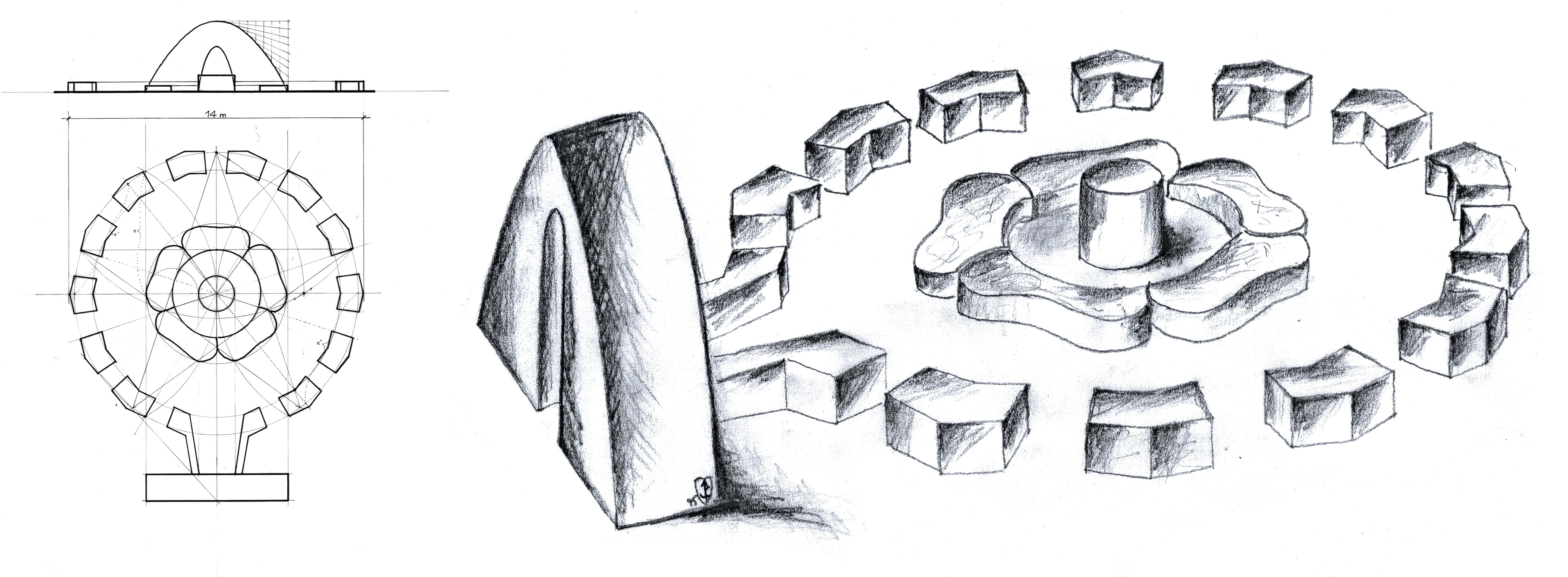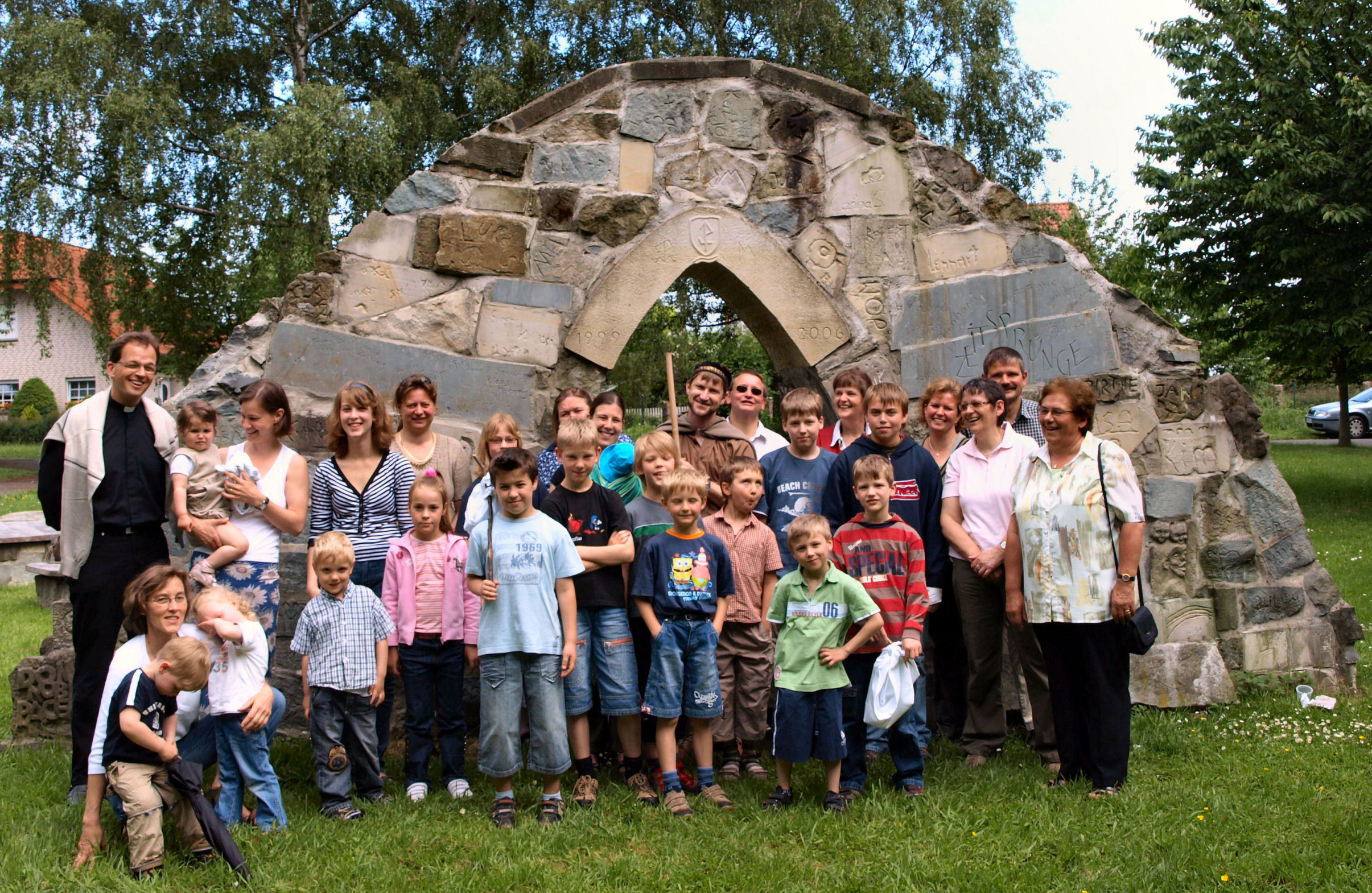


In the restoration of the towers of the Wiesenkirche, stones were accruing in the lower levels of the south tower, which in and of themselves were nothing more than debris, but could perhaps still be used as small parts for other, lesser purposes. The idea arose of building this chapel out of a conglomeration of such stones.
Groups from all areas of the community worked on individual stones in the workshop of the masons’ lodge which then carved their name or a symbol into the stone. From these building blocks and from other donated materials, building took place from 1999 – 2006 with people dedicating their free time to participate.
The participants ranged from kindergartens, schools, shooting clubs, choirs, foreign community groups, politicians and public, media and administrative figures, through to the fire brigade, senior citizens, families, therapy groups, church groups and master students.
It was run under the auspices of the Minister of Urban Development and Housing, Culture and Sport of the state of North Rhine-Westphalia, Ms Ilse Brusis and Dr. Michael Vesper.
Design & direction of the project: Jürgen Prigl
The facility is located next to the Walpurgisheim in the northern city of Soest. It is publicly accessible from the Weslarner Weg, where a bus stop is also located.
Photo: Soester Anzeiger; the community joined together to work on the project “Kinderfeldkirche”, and every now and then, celebrities also got involved in the masons’ lodge. From left to right: Dr. Michael Vesper, Minister of Urban Planning and Housing, Culture, Sport, Dr. Birgitta Ringbeck, Ministry of NRW District Administrator Wilhelm Riebniger, Mayor Eckhard Ruthemeyer, European politician, Helmut Kuhne, Director of WDR/ARD, Fritz Pleitgen, Master Builder, Jürgen Prigl

A children’s service is celebrated. Other uses of the area are also possible.
